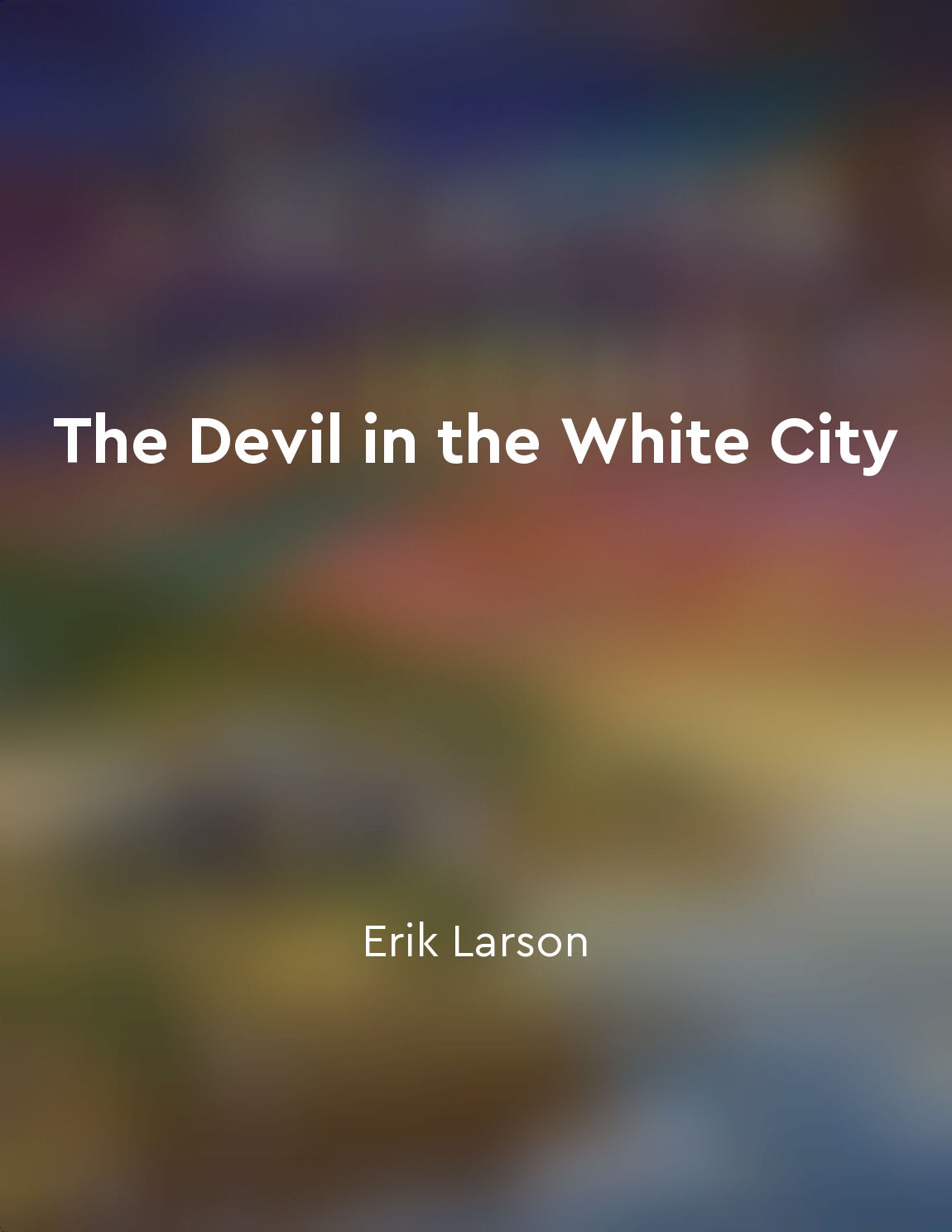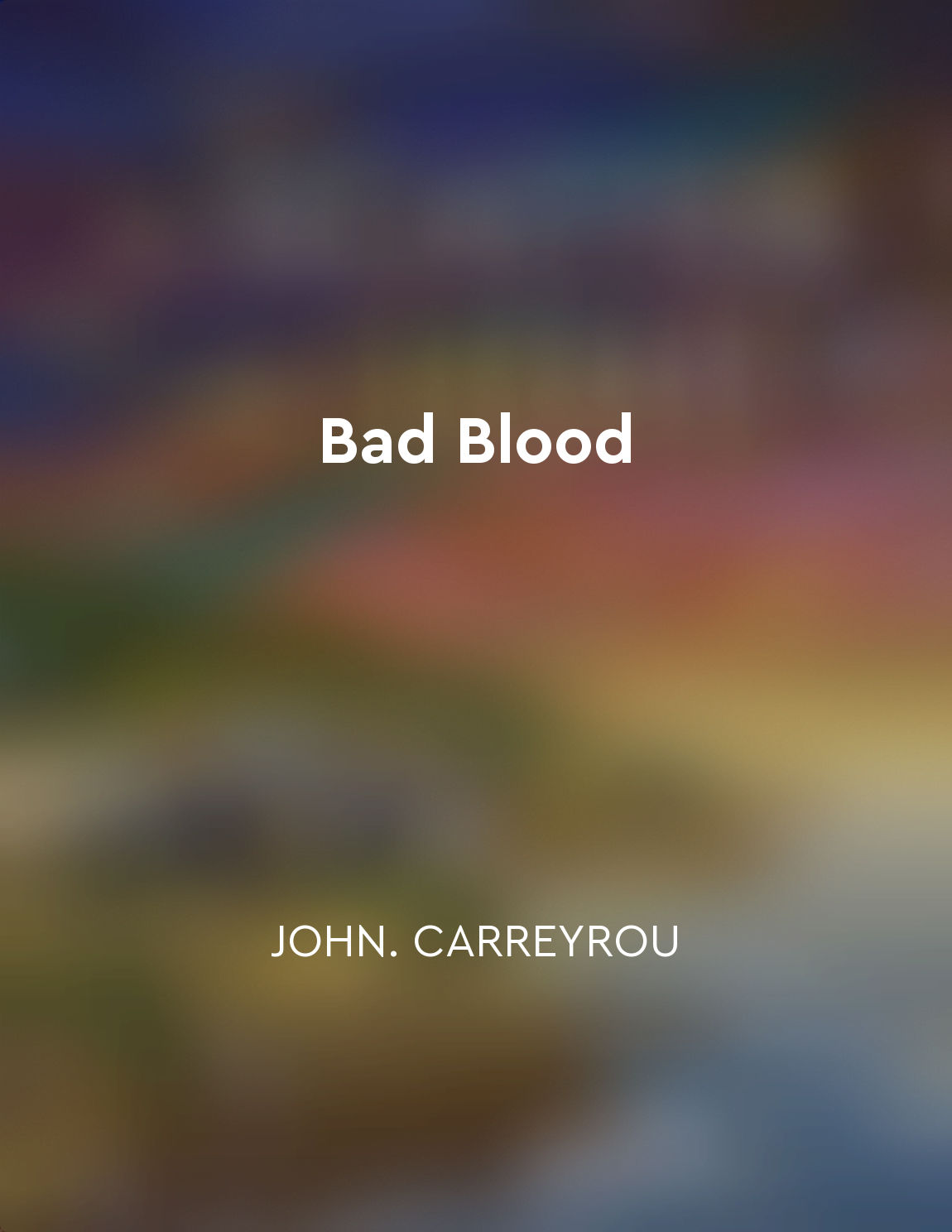The clash of light and darkness from "summary" of The Devil in the White City by Erik Larson
The World's Columbian Exposition of 1893 was a grand display of innovation and progress, a celebration of light and beauty that captivated the world. The fairgrounds were a dazzling spectacle of white buildings, shimmering waterways, and lush gardens, bathed in the glow of electric lights that illuminated the night sky. It was a beacon of hope and optimism, a symbol of the triumph of human ingenuity over darkness and despair. But lurking in the shadows of this magnificent event was a different kind of darkness, a darkness that was as insidious as it was invisible. H. H. Holmes, a charming and handsome doctor, used the fair as a hunting ground for his depraved desires. Behind the facade of his seemingly respectable persona, Holmes lured unsuspecting victims to their doom in his sinister "Murder Castle," a labyrinthine structure designed to trap and kill. As the clash between light and darkness played out against the backdrop of the fair, the contrast could not have been more stark. On one hand, there was the spectacle of progress and enlightenment, embodied by the grand architecture and innovative technology of the exposition. On the other hand, there was the seedy underbelly of Chicago, where crime and corruption thrived in the shadows. Holmes, with his dual nature as both a respected professional and a cold-blooded killer, embodied this clash in his very being. He moved seamlessly between these two worlds, using his charm and intelligence to deceive and manipulate those around him. In the end, it was this duality that made him so terrifying, a reminder that evil can wear a mask of light just as easily as it can lurk in the darkness. The clash of light and darkness at the World's Columbian Exposition was not just a physical juxtaposition of bright lights and deep shadows, but a metaphor for the eternal struggle between good and evil. It was a reminder that even in the most beautiful and enlightened of places, darkness can still find a way to seep in and corrupt. And in the case of H. H. Holmes, that darkness took on a human form, a chilling reminder of the capacity for evil that exists within us all.Similar Posts

The pursuit of justice
The pursuit of justice played a pivotal role in the narrative of 'The Devil in the White City'. Throughout the book, we witness...

Holmes's deductive reasoning astounds Watson
In the midst of our investigations, I observed Holmes engage in a display of deductive reasoning that left me utterly astounded...

Holmes claimed Theranos had revolutionary technology
Elizabeth Holmes was a charismatic figure who captured the attention of Silicon Valley with her bold claims about Theranos. She...

The clash of light and darkness
The World's Columbian Exposition of 1893 was a grand display of innovation and progress, a celebration of light and beauty that...
Killer taunts him with letter
Brady Hartsfield, the diabolical Mercedes Killer, takes pleasure in tormenting retired detective Bill Hodges with a series of t...
The continued fascination with Sherlock Holmes
The enduring popularity of Sherlock Holmes can be attributed to several factors. One reason is the character's unique blend of ...
Killer's true intentions revealed
In the midst of the investigation, Brady Hartsfield's true intentions are slowly unveiled. What initially seemed like a random ...
Descriptions that will make your skin crawl
Picture this: a dark, dingy basement with cobwebs hanging from the ceiling, creating a maze of shadows that seem to come alive ...
